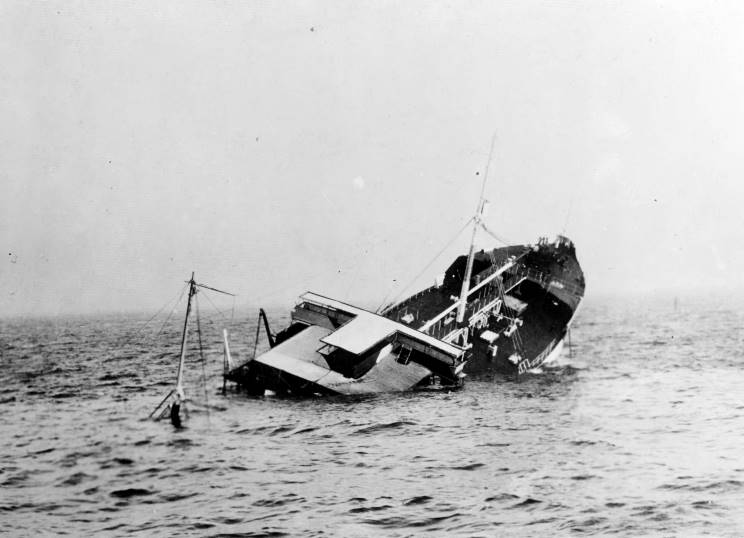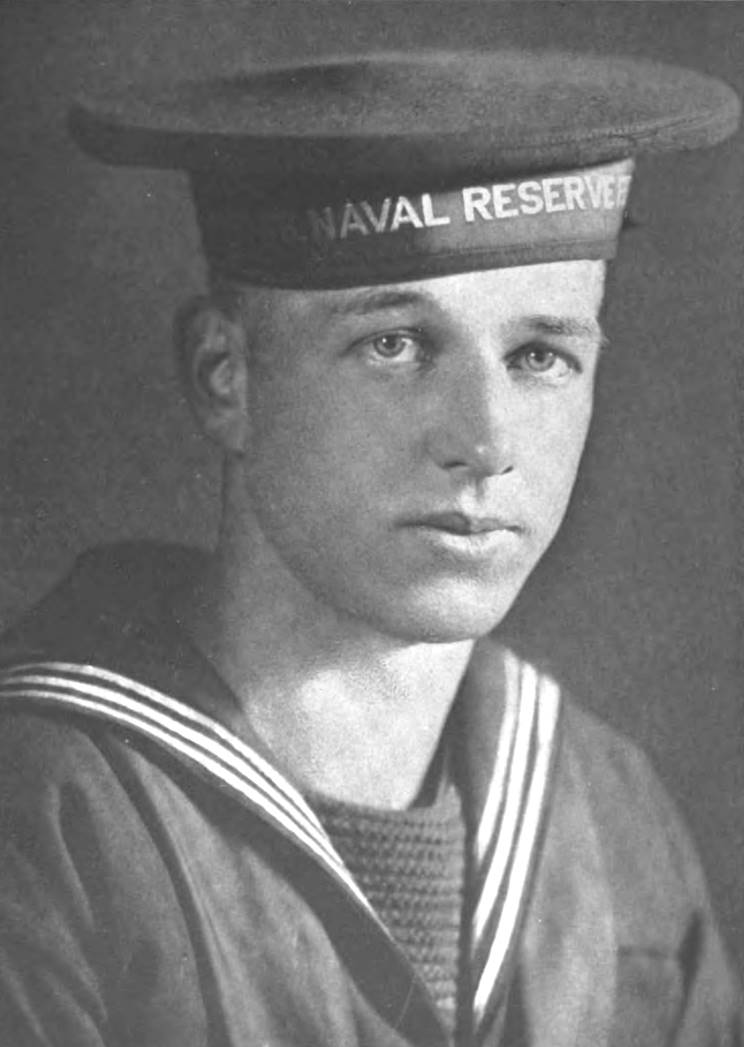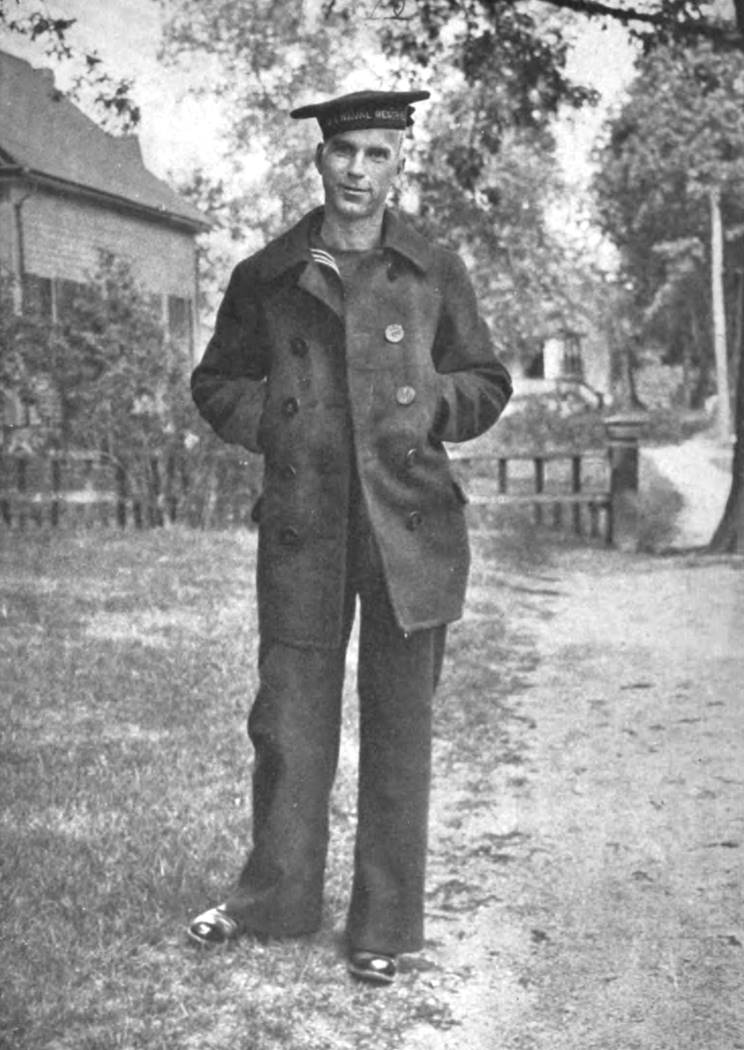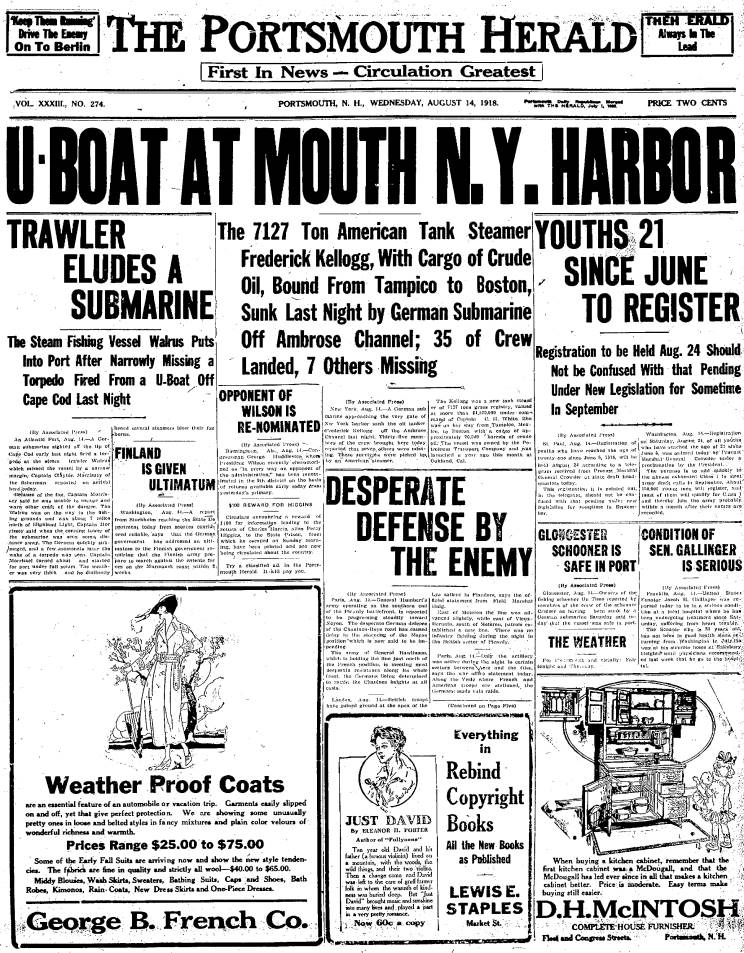|
Launched on May 19, 1917 the tanker Frederick R. Kellogg was one of the largest ships built to date at Moore & Scott Iron Works in Oakland, California. Over 425' long and registered at 7,127 gross tons her steam turbine could propel her at at 11 knots. Her owners, the Panama-American Petroleum and Transportation Company of Los Angeles were quite proud of their new ship, dressed in flags and with a cadre of guests, her trials were held on July 28, 1917. They ended at the Golden Gate Bridge after which she put back to the shipyard and was turned over to the company. Thirteen months later she made headlines around the country when she was torpedoed off Barnegat, New Jersey. She was en route from Tampico, Mexico for Boston when, without warning, on August 13, 1918 a torpedo slammed into her port quarter near the engine room. She was loaded with about 75,000 barrels of crude oil, fortunately for her crew the cargo did not explode. The explosion had killed several men in the engine room so when the master, C. H. White, ordered the engines stopped, there was no answer. All power had been lost and no distress signal could be sent, the men were on their own. The ship settled very rapidly, in less than four minutes her decks were under water, within her steel walls seven men were trapped, those killed by the torpedo and those who could not escape before she went down. Those who survived gathered on the bows and either jumped into the sea or entered the two remaining boats, one lifeboat and a motorboat of which the motor would not fire. After getting away the survivors in the boats picked up their shipmates who had jumped into the sea and joined up to head for land. At first they considered reboarding the ship, whose bow was still above water, but one survivor later stated that they were concerned that if they reboarded the ship that the submarine would fire on them. Some reports claim that the submarine came to the surface for a brief time and then submerged, however another survivor, Ensign A. Hutchinson, USNRF, later wrote that the submarine was never seen by him and that none of the crew had told him of sighting the submarine. A haze covered the area at the time, but the seas were dead calm, Hutchinson said that "anything moving or stationary could have been seen". The thirty-six survivors in the two boats, the motorboat being towed by the lifeboat, made for land, but were picked up less that three hours later by SS Huron and landed at New York. The unseen marauder was SMS U-117 commanded by Kapitänleutnant Otto Dröscher, a veteran U-boat commander who had been the first commander of U-20, the boat which sank the Lusitania. Dröscher conducted a very successful campaign off the U.S. coast in August of 1918 sinking 20 ships for about 20,000 tons. Furthermore mines laid by U-117 continued to sink and damage shipping until November of 1918. Three more ships totaling 6,841 tons went down and the battleship USS Minnesota was damaged. The low tonnage is due to a dozen fishing and sailing vessels, many under 50 tons. Dröscher surrendered his boat with the rest of the German fleet on Nov. 21, 1918. The boat was brought to the U.S.A. for exhibitions and later scuttled off the Virginia Capes. On Aug. 28, 1918 the Frederick R. Kellogg was towed into port and repaired, she continued to sail under the same name and survived the Second World War, the ship was scrapped at Southern Scrap Material in New Orleans, Louisiana in 1947. |
© 2012 Michael W. Pocock MaritimeQuest.com |
Roll of Honor |
 |
In memory of those who lost their lives in SS Frederick R. Kellogg "As long as we embrace them in our memory, their spirit will always be with us" |
Name |
Rate |
Notes |
|
Carlsen, John M. |
2nd Assistant Engineer |
||
Cubberley, Chester C. |
Cadet (USNRF) |
USNRF |
|
* |
de Louga, Francesco |
Messboy |
Portuguese national |
Johnston, Samuel L. |
2nd Assistant Engineer |
||
Jourgensen, Alex A. |
Fireman |
||
Kramer, James |
3rd Assistant Engineer |
Norwegian national |
|
Stillman, William T. |
Quartermaster 3rd Class |
USNRF |
|
* |
Age 17 |
||
|
Thanks to Dominic Etzolf for providing additional information on the Roll of Honor. |
|||
To submit a photo, biographical information or correction please email the webmaster. |
 |
The wreck of the Frederick R. Kellogg. |
 |
Cadet Chester C. Cubberley, USNRF. |
 |
Cadet William T. Stillman, USNRF. |
 |
August 14, 1918: Front page of The Portsmouth Herald, Portsmouth, New Hampshire. |